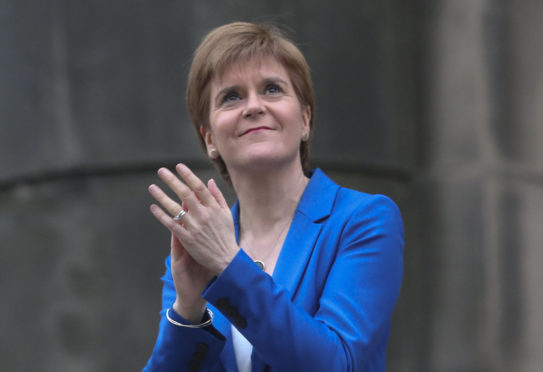
The majority of Scots have more confidence in the Scottish Government to stop a further outbreak of coronavirus than UK ministers, a survey suggests.
Nearly two-thirds of Scottish respondents (62%) believe Holyrood ministers are capable of preventing a second wave of Covid-19, while 38% said they are confident in the UK Government doing so.
The findings are among the preliminary results from the UK-wide CovidLife survey, launched last month by the University of Edinburgh’s Generation Scotland project.
When asked about the ability of the Scottish Government to prevent a further outbreak, 9% said they are very confident and 53% are somewhat confident.
This compares to 27% who are not very confident and 10% who are not confident at all.
The poll surveyed 11,686 people in Scotland with wider figures including a further 640 respondents in England.
Just 3% of the Scottish and English respondents said they are very confident the UK Government can prevent a second wave, 34% are somewhat confident, 40% are not very confident, and 23% said they are not confident at all.
Among those in Scotland, 3% said they are very confident in the UK Government, 35% are somewhat confident, 40% are not very confident, and 22% said they are not confident at all.
The period covering the survey – April 17 to May 7 – marked a time when both governments were conveying the “stay at home” message.
A majority of respondents across the UK (85%) said “stay at home, protect the NHS, save lives” was clear advice, with 65% also saying it was an appropriate measure.
Professor David Porteous, lead investigator for CovidLife, said: “Our volunteers were markedly less confident in Westminster’s ability to prevent a second outbreak of Covid-19 than Holyrood’s.
“This was for the period when the UK-wide message was: ‘Stay at home, protect the NHS, save lives’.
“It will be very interesting to see how that level of confidence is affected now that Westminster has changed its message to ‘Stay alert, control the virus, save lives’.”
A Scottish Government spokesman said: “We are very grateful to the public for their continuing support of the ‘Stay at home, save lives’ essential message.
“The very difficult sacrifices which we are all making are working, but progress remains fragile and the margins for ensuring the virus does not take off again remain tight – we are at a pivotal point.
“We will not keep lockdown in place for a moment longer than is necessary and will set out a phased approach to relieving some of the pressure of lockdown as soon as we can.”

Enjoy the convenience of having The Sunday Post delivered as a digital ePaper straight to your smartphone, tablet or computer.
Subscribe for only £5.49 a month and enjoy all the benefits of the printed paper as a digital replica.
Subscribe